#17th century painters
Explore tagged Tumblr posts
Text
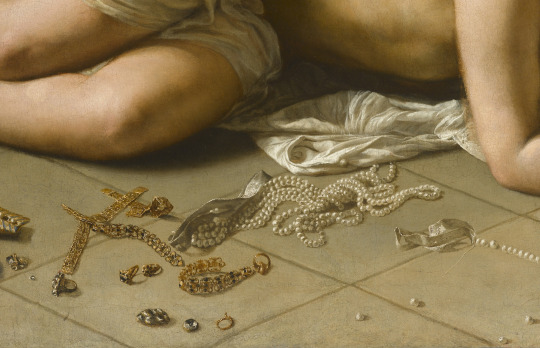
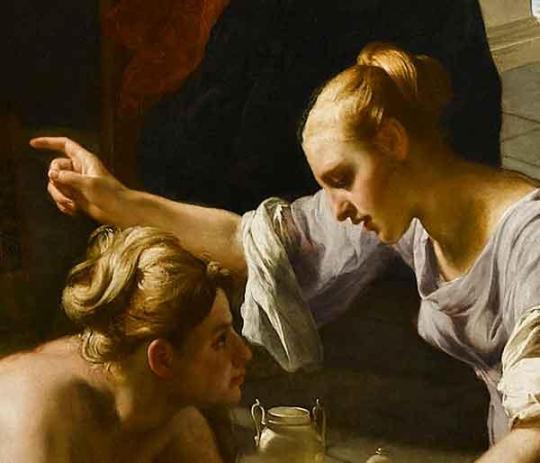
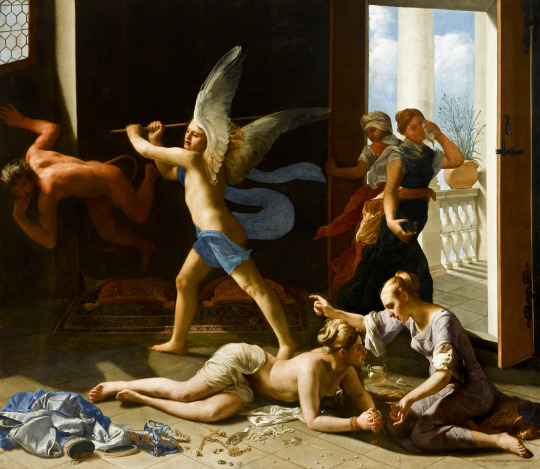
Guido Cagnacci (Italian, 1601–1663), The Repentant Magdalene, detail, circa 1660.
Norton Simon Museum.
The event depicted in the elegant space of this canvas is an episode from the life of Mary Magdalene, the courtesan who renounced her sinful ways and converted to Christianity, following her encounter with Christ in the temple. Mary is shown on the floor, having discarded her luxurious clothes and jewels; her face is reddened from remorse and her body barely covered by a white sheet. Her sister Martha sits on a cushion, calming her, while behind them two servants are leaving the room after having witnessed their mistress’s emotional scene. Cagnacci has also included two allegorical figures to the left. A standing angel banishes a levitating devil, complete with horns and a tail. He lurches toward the window as he flees the room. The combatant figures represent Virtue and Vice as they battle for Mary’s soul at the moment she chooses to embrace her virtuous new Christian life. (x)
#Guido Cagnacci#painting#1660#art#fine art#Norton Simon Museum#the repentant magdalene#detail#cagnacci#pearls#jewerly#necklace#rings#earrings#jewlery#repentant#17th century#17th century painters#17th century art#17th century paintings#italian painters#italian art#italian paintings#masterpiece#Mary Magdalene#courtesan#mary
40 notes
·
View notes
Text

"Bellona (detail)"
1633
Rembrandt
#dark academia#light academia#classical#academia aesthetic#escapism#academia#books and libraries#classic literature#books#architecture#art#painting#Bellona#detail#artist#painter#rembrandt#1600s#17th century#royal core#cottage core#aesthetic#academic#artistic#aesthetics#academics#mood#vibe#tumblr
2K notes
·
View notes
Text

Michaelina Wautier - Saint Joseph (1650-1656)
429 notes
·
View notes
Text

Jan Asselijn, The Threatened Swan, c. 1650
#Jan Asselijn#oil painting#17th century art#dutch golden age#swan#dutch painter#oil on canvas#baroque#dutch art#1650
420 notes
·
View notes
Text

Ferdinand van Kessel (attributed)
The Dance of the Rats
ca. 1690
#Ferdinand van Kessel#flemish painter#flemish painting#flemish art#flemish artist#baroque#baroque painting#baroque art#baroque artist#rats#animals in art#dancing#17th century#art on tumblr#rodent#beautiful animals#art history#aesthetictumblr#tumblraesthetic#tumblrpic#tumblrpictures#tumblr art#aesthetic#beauty
474 notes
·
View notes
Text

Incostanza, An Allegory of Fickleness
Artist: Abraham Janssens I (Flemish, 1575–1632)
Genre: Allegory
Date: c. 1617
Medium: Oil on canvas
Collection: National Gallery of Denmark, Copenhagen, Denmark
Description
The present painting shows “fickleness” in keeping with the era’s code books of symbols in art, where the semi-clad woman, the ever-changing moon, and crustaceans - capable of walking sideways - serve as markers for those of a mercurial temperament.
The artist, moved by a visual desire that we would now term voyeurism or fetishism, focuses intently on her breasts, which shine with a brightness even greater than that of the crescent-moon face she holds in her hand.
The breasts are associated with other feminine characteristics: with bodily matters, impulsivity, and the subconscious as well as with fertility and pregnancy.
The woman may be attractive, but she is also potentially dangerous. In contrast to the moon, the sun was typically a symbol of maleness and masculinity, i.e. of intelligence, will, exaltedness, and divinity.
#allegorical art#painting#oil on anvas#allegory of fickleness#inconstanza#woman#semi clad woman#moon#crustaceans#rabbit#abraham janssens i#flemish painter#flemish art#netherlandish#european art#artwork#oil painting#17th century painting
91 notes
·
View notes
Text

Christ Receiving the Children
Artist: Sébastien Bourdon (French, 1616–1671)
Date: 1650–1660
Medium: Oil on canvas
Collection: Art Institute of Chicago, Chicago, IL, United States
Description
In this illustration of an episode from the Gospel of Mark in the New Testament, Jesus (reclining at center) admonishes his disciples not to prevent little children from approaching him. Sébastien Bourdon's figures wear draperies in the antique fashion, and the setting evokes both ancient Rome and the Christian Holy Land.
One of the most versatile and successful 17th-century French painters, Bourdon emulated the rigorous classical style of Nicolas Poussin. Bourdon knew Poussin's work (such as the painting on view in this gallery) from his early years in Rome. Following Poussin's compositional principles, Bourdon organized this scene as a series of parallel, stage-like registers, resulting in a calm, geometric order.
#painting#oil on canvas#fine art#artwork#christianity#gospel of mark#biblical scene#jesus#christ receiving the children#children#men#women#architecture#french culture#oil painting#landscape#palms#cloudy horizon#french art#sebastien bourdon#french painter#17th century painting#european art#art institute of chicago
63 notes
·
View notes
Text

Gerard van Honthorst (1592-1656)
A Laughing Violinist, circa 1624
122 notes
·
View notes
Text

Toilette of Belinda, 17th century
By Antonio Bellucci
#art#painting#fine art#classical art#italian art#italian painter#italian artist#oil painting#portrait#female portrait#belinda#beauty#17th century art#17th century#european art#rococo#rococo art#classical beauty#1600s#long hair
69 notes
·
View notes
Text

Evert Collier (Dutch, 1642 - 1708) • Vanitas - Still Life with Books, Manuscripts and a Skull • 1663
#still life#art#painting#fine art#evert collier#dutch golden age#17th century european art#oil painting#art history#art of the still life blog#still life painter#artwork#art blogs on tumblr#art lovers on tumblr
78 notes
·
View notes
Text

Jan van Kessel the Elder. Vanitas Still Life, c. 1665-70.
oil on copper
177 notes
·
View notes
Text
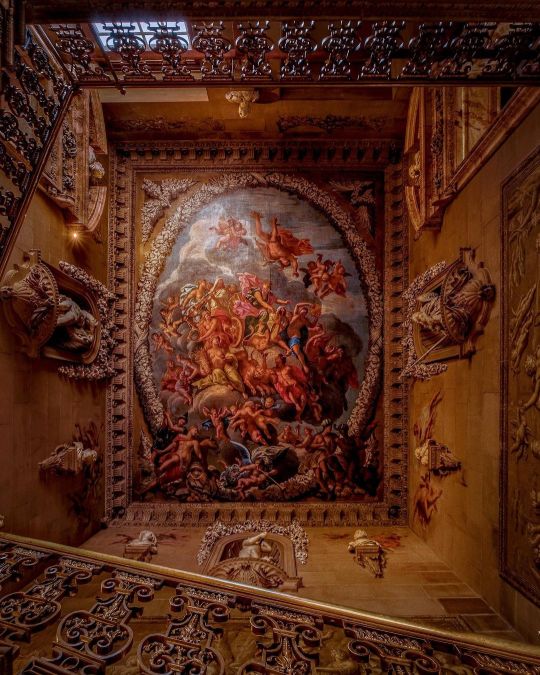
fresco in chatsworth house, england ⋅ by antonio verrio, c. 1691
#fresco#art#paint#painting#painter#history#17th century#17th century art#antique#vintage#antonio verrio#chatsworth#chatsworth house#england#uk#united kingdom#beauty#tourism#inspo#inspiration#create#discover#photo#photograph#photography#photographer#insta#instagram#twitter#tumblr
633 notes
·
View notes
Text

The Archangel Michael
1624-1626
Giuseppe Cesari
#light academia#dark academia#classical#academia aesthetic#escapism#academia#books and libraries#classic literature#books#architecture#art#painting#the archangel michael#painter#artist#giuseppe cesari#1600s#17th century#17th century art#1600s art#royal core#cottage core#aesthetic#academic#artistic#mood#vibe#tumblr
103 notes
·
View notes
Text

Clio. Muse of History
Artist: Johannes Moreelse (Dutch, c. 1603-1634)
Date: 1634
Medium: Oil on canvas mounted on panel
Location: National Museum in Warsaw, Poland
"History, if thoroughly comprehended, furnishes something of the experience which a man would acquire who should be a contemporary of all ages and a fellow-citizen of all peoples." ~Joseph Roux
#greek mythology#fine art#oil painting#johannes moreelse#artwork#books#history#muse#open book#clio#muse of history#olive wreath#candle#candle holder#table#costume#dutch culture#dutch art#dutch painter#european art#17th century painting#national museum in warsaw
95 notes
·
View notes
Text
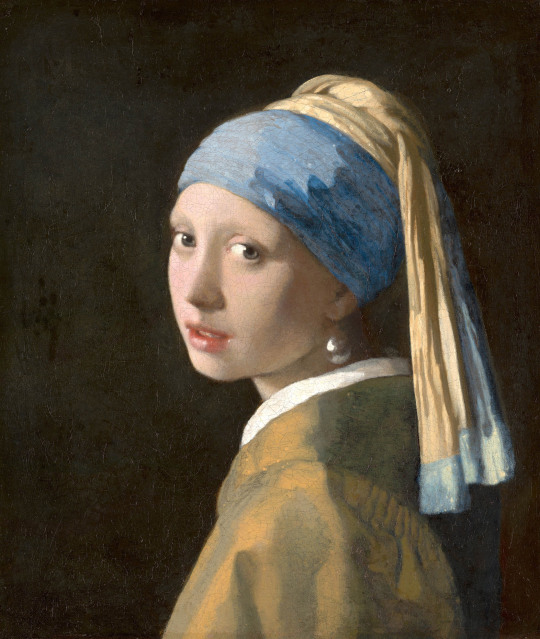
Girl with a Pearl Earring
Artist: Johannes Vermeer (Dutch, 1632-1675)
Date: 1665
Medium: Oil on Canvas
Collection: Mauritshuis, The Hague, Netherlands
Description
A young woman looks over her shoulder at us. She holds her head slightly to one side, there is a gleam in her greyish-blue eyes, and her lips are slightly parted and moist. On her head is a turban that she has wound from two pieces of material, one blue and one yellow, and she is adorned with a pearl earring. It is from this oversized jewel in the middle of the composition that the painting derives its title.
The painting provides a rich sample of every aspect of Vermeer’s virtuoso painting technique. The face is modelled very softly, not in great detail but with gradual transitions and invisible brushstrokes. The clothing is depicted more schematically and enlivened with small dots of paint suggesting reflected light – one of Vermeer’s trademark features. Even so, the artist has clearly indicated differences between materials – for instance between the white collar, painted in impasto, and the drier paint of the turban, for which he used the precious pigment ultramarine. But the most remarkable detail is the pearl. This consists of little more than two brushstrokes: a bright highlight at upper left and the soft reflection of the white collar on the underside.
Seventeenth-century Dutch girls did not wear turbans. With this accessory Vermeer has given the girl an Oriental air. Images like this were known in the seventeenth century as tronies. Tronies are not portraits: they were not made in order to produce the best possible likeness of an individual. Although there would probably be a sitter, the point of a tronie was mainly to make a study of a head representing a particular character or type. Rembrandt had popularised tronies in Dutch art around 1630. He made dozens of them, often using himself as the model, sometimes wearing a remarkable cap or a helmet.
The pearl is too large to be real. Perhaps the girl is wearing a pearl drop made of glass, which has been varnished to give it a matte sheen. Another possibility, of course, is that the pearl was a product of Vermeer’s imagination. Pearls – both real and imitation – were fashionable in the period from about 1650 to 1680. We often find them in paintings by Frans van Mieris, Gabriel Metsu and Gerard ter Borch.
Girl with a Pearl Earring has been known to the general public only since 1881, when it was put up for auction at the Venduhuis der Notarissen in The Hague. On the viewing day it attracted the attention of the influential cultural official Victor de Stuers, who was there together with his friend and neighbour, the art collector A.A. des Tombe.
#painting#oil on canvas#johannes vermeer#dutch painter#girl with a pearl earring#female#turban#pearl earrings#gold#blue#17th century painting#dutch art#european art
61 notes
·
View notes
Text

Minerva in Her Study
Artist: Rembrandt van Rijn (Dutch 1606-1669)
Date: 1635
Medium: Oil on canvas
Collection: The Leiden Collection, New York City, NY, United State
Description
In this imposing masterpiece, Minerva looks up from her large folio and gazes out toward the viewer as though some distraction has interrupted her quiet concentration on the text. Golden light illuminates her powerful face with wide-open eyes and alert expression, as well as the long, flowing blonde hair cascading onto her shoulder. Her regal appearance is enhanced by the laurel wreath crowning her head, her pearl necklace, and the heavily embroidered cloak draped over her shoulders. Beneath the cloak is an ample blue garment tied with a knotted blue sash over a light gray skirt and a white shirt. In the background are more volumes, a globe, a golden helmet on a draped piece of fabric, a spear, and a large shield with the Gorgon’s head hanging from a column.
As one of the main Olympian deities, Minerva had various functions and attributes. She was the virgin goddess of war, but unlike her counterparts Mars or Bellona, she was neither belligerent nor cruel. Her inventive strategy led to victory and she was therefore, paradoxically, also the goddess of peace. She was also the goddess of wisdom, art, poetry, medicine and crafts, especially those of spinning and weaving. Rembrandt van Rijn was fascinated with biblical and mythological subjects such as Minerva, and he firmly believed that depictions of them and their stories comprised the most significant of all genres of painting. This principle, shared by collectors, theorists and painters alike, lay at the very core of Dutch humanistic traditions. Throughout his career, Rembrandt’s history paintings stand apart from those of other Dutch artists because of his ability to convey human feelings and emotions to gods and goddesses, and mere mortals from the Bible and mythology. In the mid-1630s, shortly after Rembrandt moved to Amsterdam, he radically transformed the style and focus of his history paintings, executing works such as Minerva in Her Study at a scale and with a visual power unprecedented in the Netherlands. It is not certain what motivated him to paint in such an imposing manner after he left Leiden, but probably he sought to emulate and even compete with the achievements of Peter Paul Rubens (1577–1641), then universally recognized as the greatest history painter of the day.
#mythological art#rembrandt van rijn#artwork#dutch culture#dutch art#minerva#interior#female figure#open book#laurel wreath#pearl necklace#embroidered cloak#books#globe#upholstered chair#garment#grey skirt#white shirt#sash#gorgon's head#column#drapery#roman mythology#roman virgin#dutch painter#oil on canvas#fine art#oil painting#european art#17th century painting
31 notes
·
View notes